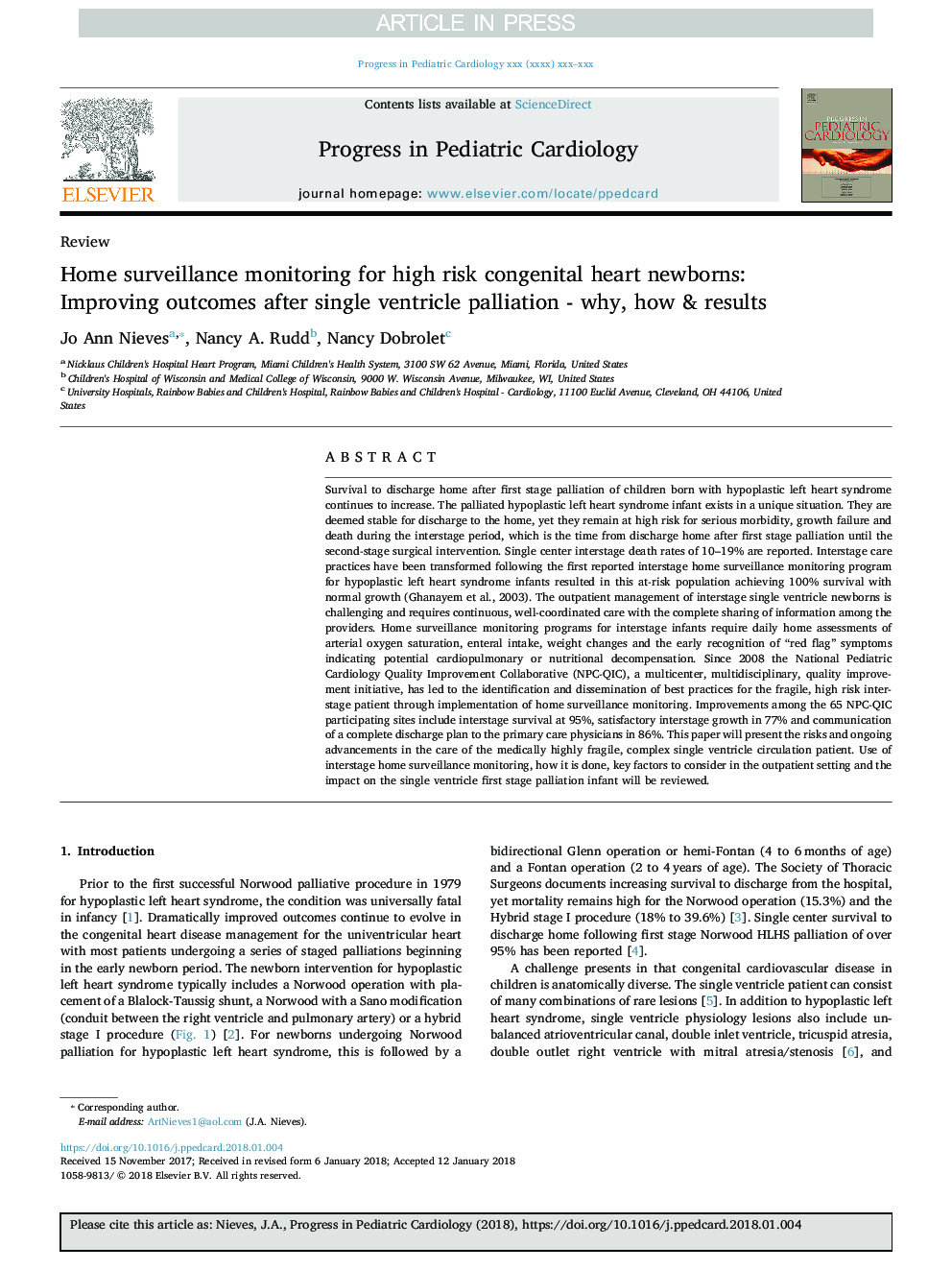| Article ID | Journal | Published Year | Pages | File Type |
|---|---|---|---|---|
| 8675332 | Progress in Pediatric Cardiology | 2018 | 12 Pages |
Abstract
Survival to discharge home after first stage palliation of children born with hypoplastic left heart syndrome continues to increase. The palliated hypoplastic left heart syndrome infant exists in a unique situation. They are deemed stable for discharge to the home, yet they remain at high risk for serious morbidity, growth failure and death during the interstage period, which is the time from discharge home after first stage palliation until the second-stage surgical intervention. Single center interstage death rates of 10-19% are reported. Interstage care practices have been transformed following the first reported interstage home surveillance monitoring program for hypoplastic left heart syndrome infants resulted in this at-risk population achieving 100% survival with normal growth (Ghanayem et al., 2003). The outpatient management of interstage single ventricle newborns is challenging and requires continuous, well-coordinated care with the complete sharing of information among the providers. Home surveillance monitoring programs for interstage infants require daily home assessments of arterial oxygen saturation, enteral intake, weight changes and the early recognition of “red flag” symptoms indicating potential cardiopulmonary or nutritional decompensation. Since 2008 the National Pediatric Cardiology Quality Improvement Collaborative (NPC-QIC), a multicenter, multidisciplinary, quality improvement initiative, has led to the identification and dissemination of best practices for the fragile, high risk interstage patient through implementation of home surveillance monitoring. Improvements among the 65 NPC-QIC participating sites include interstage survival at 95%, satisfactory interstage growth in 77% and communication of a complete discharge plan to the primary care physicians in 86%. This paper will present the risks and ongoing advancements in the care of the medically highly fragile, complex single ventricle circulation patient. Use of interstage home surveillance monitoring, how it is done, key factors to consider in the outpatient setting and the impact on the single ventricle first stage palliation infant will be reviewed.
Related Topics
Health Sciences
Medicine and Dentistry
Cardiology and Cardiovascular Medicine
Authors
Jo Ann Nieves, Nancy A. Rudd, Nancy Dobrolet,
